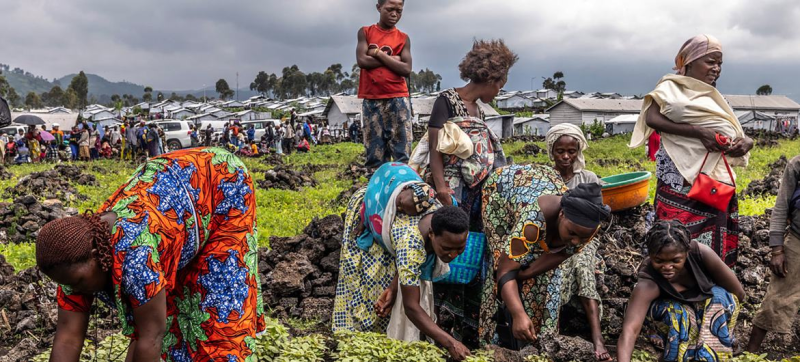- WHO Says Traditional Medicine Use Surges Worldwide |
- UN Report Calls for New Thinking to Secure a Sustainable Future |
- BNP moves to finalise seat sharing as alliance friction grows |
- BNP plans universal 'Family Card' for all women: Tarique Rahman |
- Tangail saree weaving gets recognition as intangible cultural heritage |
Why Over 670 Million People Still Go Hungry Worldwide

FAO is assisting displaced people in DR Congo with cash transfers and agricultural assistance.
More than eight per cent of the world’s population — around 673 million people — are not getting enough to eat and are going hungry, according to the United Nations.
Conflict, climate change, and inequality all play a role, but there are other reasons behind what is often described rather dryly as “food insecurity.”
Ahead of World Food Day on 16 October, here are five key factors explaining why, even though there is enough food to feed over eight billion people, millions still go hungry.
1. Conflict and political instability
Armed conflicts — such as those in Ukraine, Sudan, and Gaza — disrupt food production, supply chains, and access to markets. This displacement of people leads to acute food insecurity for millions.
In Haiti, an estimated 5.7 million people – roughly half the population – many displaced by violence, face a worsening food security crisis, with 1.9 million at emergency levels.
In conflict zones, the UN, primarily through the World Food Programme (WFP), delivers immediate food aid to populations facing acute food insecurity.
Affected communities are also provided with seeds, livestock, and farming tools, enabling them to grow their own food and reduce reliance on aid.
2. Climate change and extreme weather
Increasing climate variability — including droughts, floods, and heatwaves — disrupts farmers’ ability to grow food, undermining agricultural productivity and food availability, especially in vulnerable regions.
Countries such as Somalia, Sudan, South Sudan, Mali, Burkina Faso, the Democratic Republic of the Congo (DRC), Nigeria, and Ethiopia face acute food insecurity driven by a mix of conflict, drought, and desertification.
Somalia, for instance, is experiencing its worst drought in four decades, compounding years of conflict and displacement.
The UN promotes climate-resilient farming techniques to mitigate the effects of environmental shocks — for example, the half-moon agricultural method in Africa’s Sahel region.
3. Economic shocks and inflation
Global and regional economic downturns, rising food and energy prices, and inflation have all combined to reduce purchasing power and access to nutritious food, particularly in low-income countries.
The COVID-19 pandemic, the war in Ukraine, and climate shocks all contributed to surging food prices between 2020 and 2024.
As food prices rose and real wages fell, people — especially in poorer nations — were less able to afford nutritious meals and often had to reduce their daily food intake.
During such economic crises, the UN scales up food rations, nutritional supplements, and cash-based transfers to help families buy food locally, supporting both nutrition and local markets.
4. Structural poverty and inequality
Deep-rooted poverty and social inequality limit access to food and resources, particularly in rural and marginalised communities, perpetuating chronic hunger.
Low incomes, poor infrastructure, and inadequate public services often mean that marginalised groups — especially women and indigenous peoples — do not get enough to eat.
Nearly 700 million people live in extreme poverty globally, with two-thirds residing in Sub-Saharan Africa, according to the UN.
Through various agencies, the UN works to strengthen social protection systems and shift from crisis-driven aid to long-term, resilient, and inclusive food systems.
This approach empowers communities to reduce hunger, build local capacity, and improve long-term food security.
5. Trade disruptions and market volatility
Export restrictions, tariffs, and volatile commodity prices can destabilise food markets, making food less affordable and accessible in countries that depend on imports.
Bangladesh, Pakistan, and Sri Lanka are grappling with food price volatility and debt challenges. These are worsened by global trade policy uncertainty and inflation, which ultimately limit people’s access to affordable food.
Similarly, Brazil and Mexico have both experienced slower economic growth due to trade tensions and inflation, weakening consumer spending and increasing food insecurity among low-income communities.
The UN supports affected countries by monitoring global prices, offering policy guidance, and coordinating international responses to manage the interlinked crises of food, energy, and finance. These efforts aim to stabilise markets and protect vulnerable populations.

